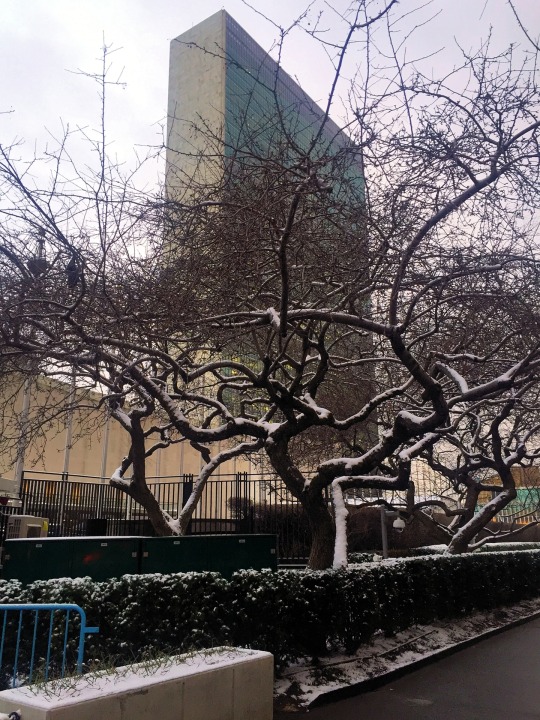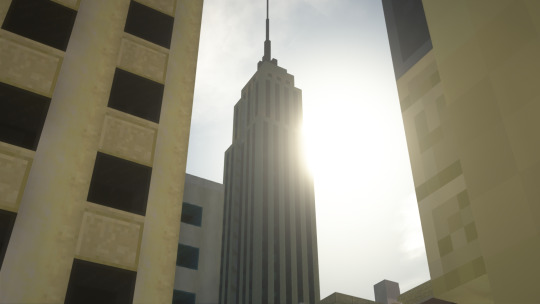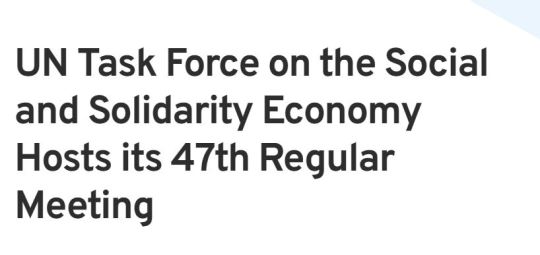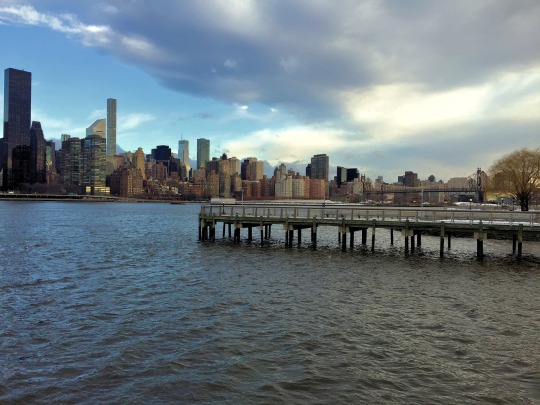#United Nations Secretariat Building
Text

George Grosz (German, 1893-1959), United Nations Secretariat Building, 1950. Watercolor and pen and ink on paper, 19 1/8 x 26 1/16 in.
#george grosz#german art#united nations building#United Nations Secretariat Building#new york#new york city
101 notes
·
View notes
Text


Stopping by Turtle Bay on a Snowy Evening ❄️
#Good Evening#Snow#Winter#New York City#United Nations Secretariat Building#Turtle Bay#Manhattan#Street Scene#Prunus#Tree#United Nations Headquarters#New York
13 notes
·
View notes
Text
Time Square - New York
Time Square – New York
What could more epitomise New York than Time Square. The previous night I didn’t do my usual planning for the following day, causing a late start to the day. Time Square was the only thing I had decided on. I’d walk there and take in the city on my feet. I did a few other things I won’t cover in this post. Like, finding an electronics shop to buy a new Kindle…mine had broken months previous. The…

View On WordPress
#Akihabara#Chrysler Building#Eswatini#New York#Swaziland#Time Square#UN#United Nations#United Nations Building#United Nations Secretariat Building
0 notes
Photo

Aerial view looking northeast of Midtown Manhattan in late September, 1970 with many new office skyscrapers.
The 102-story Empire State Building (Shreve, Lamb & Harmon, 1931) with the 40-story 1250 Broadway Tower (Shreve, Lamb & Harmon, 1969) are on center, foreground with the 77-story Chrysler Building (William Van Allen, 1930) are visible at backgroud. The Park Avenue’s modern skyscrapers corridor, with Pan Am Building (Walter Gropius-Emery Roth & Sons-Pietro Belluschi, 1963) are visible at background, at left. The United Nations’ Secretariat Building (Wallace K. Harrison, 1950) are at background, at right. The building under construction that can be seen just behind Empire State is the 45-story 600 Third Avenue Building (Emery Roth & Sons, 1971). The steel skeleton that be begun to rises up at extreme left, on foreground, is the future W.R. Grace Building (Skidmore, Owings & Merrill, 1972) under construction.
Photo: The Scheller Co.
#1970#1970s#aerial#Empire State Building#Shreve Lamb & Harmon#1250 Broadway Building#chrysler building#William Van Allen#pan am building#Walter Gropius#Pietro Belluschi#emery roth & sons#united nations secretariat#skyscrapers#construction#Skidmore Owings & Merrill#union carbide building#500 fifth avenue#w.r. grace building#600 Third Avenue#international style#art deco#Architecture#building boom#cityscape#urban renewal
27 notes
·
View notes
Text

The United Nations' New York headquarters opened on October 14, 1952. The complex was designed by an architectural board led by Wallace K. Harrison, with input from Oscar Niemeyer and Le Corbusier. The tall building is the Secretariat, which contains offices, and the low building (difficult to see in this photo as it's as white as the ground it sits on) is the General Assembly.
Photo: Associated Press
#vintage New York#1950s#United Nations#UN New York#U.N.#architecture#Oct. 14#October 14#14 October#14 Oct.#Wallace K. Harrison#Le Corbusier#Turtle Bay#Oscar Niemeyer
57 notes
·
View notes
Text

for Peace
Mural for Peace, by Norwegian artist Per Krohg, hanging as the backdrop of the Security Council chamber at the United Nations secretariat, New York City, NY.
Untitled (Mural for Peace) was painted by Norwegian artist Per Krohg (1889 – 1965). He was born in Oslo, Norway and was the son of well-known painter Christian Krohg. The painting has sections showing symbols of human struggle.
The bottom center has a phoenix rising from a world covered in ashes, symbolizing the world rebuilding itself after war. The upper center section shows a man and a woman both kneeling and holding flowers with children. The surrounding panels show people happy, singing and dancing while the lower section is dark and somber, showing a dungeon, dragon lairs, soldiers, and war machines. The people are struggling to free themselves from the bonds and chains. The symbol of rising from the dark ashes to the light happiness is inspired by the humankind’s efforts to achieve peace, equality, and freedom.
Artist Per Krohg valued family happiness and unity and is featured at the paintings’ center. He said, “the essence of the idea is to give an impression of light, security and joy. The world we see in the foreground is collapsing, while the new world based on clarity and harmony can be built up.”
The mural was presented to the United Nations by the Prime Minister of Norway Oscar Torp on behalf of the country of Norway on 22 September 1952 at an informal meeting of the Security Council.
Donor Region: Western European and Other Groups
Donor: Norway
Classification: Paintings & Works on Paper
Materials: Other
Medium: Oil on Belgian linen
Location (Building): Conference Building (CB)
Location floor: 2nd Floor
Donation Date: September 22, 1952
Artist or Maker: Per Krohg
Dimensions: 18'-3" x 29'-4"
6 notes
·
View notes
Text






Released a new update to my Minehattan map. You can check it out here: https://www.planetminecraft.com/project/mini-manhattan/
New buildings:
- United Nations Secretariat Building
- 383 Madison Avenue
- Trump World Tower
- One & Two United Nations Plaza
- Tudor City (partially)
- Bloomberg Tower
- Updated 780 Third Avenue
- 919 Third Avenue
- 909 Third Avenue
- Burroughs Building
- Continental Can Building
- 2 Park Avenue
New tenement blocks have been added, primarily around 1st, 2nd, 3rd, Lexington Avenue and 8th, 9th, 10th Avenue.
3x6 in size, they were granted by the city of Minehattan to anyone who didn't have funds to build their own house. People could secretly expand their house, by demolishing interior walls between their and their neighbours house, but this practice was strongly punished up until 1940s. So if city official found out you and your neighbour expanded your house(es), you both could end up homeless from the amount of debt amassed from fines.
*No, I'm not replacing 270 Park Avenue. They should have just build a new building on the small annex behind the 270 Park tower instead of just demolishing the entire building.
**My blog is primarily furry stuff but I also do a lot of builds in Minecraft. If you're only interested in my minecraft builds, follow me on PlanetMinecraft. If you like both minecraft and furry things, then follow me here or wherever on my Carrd.
6 notes
·
View notes
Text
#NewMoon HELL YES. IT'S ABOUT TIME. THANK YOU #JohnKerry

"ENDINGS AND NEW BEGINNINGS"
UN Climate Change News, 13 December 2023 – The United Nations Climate Change Conference (COP28) closed today with an agreement that signals the “beginning of the end” of the fossil fuel era by laying the ground for a swift, just and equitable transition, underpinned by deep emissions cuts and scaled-up finance.
In a demonstration of global solidarity, negotiators from nearly 200 Parties came together in Dubai with a decision on the world’s first ‘global stocktake’ to ratchet up climate action before the end of the decade – with the overarching aim to keep the global temperature limit of 1.5°C within reach.
“Whilst we didn’t turn the page on the fossil fuel era in Dubai, this outcome is the beginning of the end,” said UN Climate Change Executive Secretary Simon Stiell in his closing speech. “Now all governments and businesses need to turn these pledges into real-economy outcomes, without delay.”
The global stocktake is considered the central outcome of COP28 – as it contains every element that was under negotiation and can now be used by countries to develop stronger climate action plans due by 2025.
The stocktake recognizes the science that indicates global greenhouse gas emissions need to be cut 43% by 2030, compared to 2019 levels, to limit global warming to 1.5°C. But it notes Parties are off track when it comes to meeting their Paris Agreement goals.
The stocktake calls on Parties to take actions towards achieving, at a global scale, a tripling of renewable energy capacity and doubling energy efficiency improvements by 2030. The list also includes accelerating efforts towards the phase-down of unabated coal power, phasing out inefficient fossil fuel subsidies, and other measures that drive the transition away from fossil fuels in energy systems, in a just, orderly and equitable manner, with developed countries continuing to take the lead.
In the short-term, Parties are encouraged to come forward with ambitious, economy-wide emission reduction targets, covering all greenhouse gases, sectors and categories and aligned with the 1.5°C limit in their next round of climate action plans (known as nationally determined contributions) by 2025.
Helping countries strengthen resilience to the effects of climate change
The two-week-long conference got underway with the World Climate Action Summit, which brought together 154 Heads of States and Government. Parties reached a historic agreement on the operationalization of the loss and damage fund and funding arrangements – the first time a substantive decision was adopted on the first day of the conference. Commitments to the fund started coming in moments after the decision was gaveled, totaling more than USD 700 million to date.
There was more progress on the loss and damage agenda with an agreement also reached that the UN Office for Disaster Risk Reduction and the UN Office for Project Services will host the secretariat of the Santiago Network for Loss and Damage. This platform will catalyze technical assistance to developing countries that are particularly vulnerable to the adverse effects of climate change.
Parties agreed on targets for the Global Goal on Adaptation (GGA) and its framework, which identify where the world needs to get to in order to be resilient to the impacts of a changing climate and to assess countries’ efforts. The GGA framework reflects a global consensus on adaptation targets and the need for finance, technology and capacity-building support to achieve them.
Increasing climate finance
Climate finance took center stage at the conference, with Stiell repeatedly calling it the “great enabler of climate action.”
The Green Climate Fund (GCF) received a boost to its second replenishment with six countries pledging new funding at COP28 with total pledges now standing at a record USD 12.8 billion from 31 countries, with further contributions expected.
Eight donor governments announced new commitments to the Least Developed Countries Fund and Special Climate Change Fund totaling more than USD 174 million to date, while new pledges, totaling nearly USD 188 million so far, were made to the Adaptation Fund at COP28.
However as highlighted in the global stocktake, these financial pledges are far short of the trillions eventually needed to support developing countries with clean energy transitions, implementing their national climate plans and adaptation efforts.
In order to deliver such funding, the global stocktake underscores the importance of reforming the multilateral financial architecture, and accelerating the ongoing establishment of new and innovative sources of finance.
At COP28, discussions continued on setting a ‘new collective quantified goal on climate finance’ in 2024, taking into account the needs and priorities of developing countries. The new goal, which will start from a baseline of USD 100 billion per year, will be a building block for the design and subsequent implementation of national climate plans that need to be delivered by 2025.
Looking ahead to the transitions to decarbonized economies and societies that lie ahead, there was agreement that the mitigation work programme, which was launched at COP27 last year, will continue until 2030, with at least two global dialogues held each year.
Event participation and inclusivity
World leaders at COP28 were joined by civil society, business, Indigenous Peoples, youth, philanthropy, and international organizations in a spirit of shared determination to close the gaps to 2030. Some 85,000 participants attended COP28 to share ideas, solutions, and build partnerships and coalitions.
The decisions taken here today also reemphasize the critical importance of empowering all stakeholders to engage in climate action; in particular through the action plan on Action for Climate Empowerment and the Gender Action Plan.
Strengthening collaboration between governments and key stakeholders
In parallel with the formal negotiations, the Global Climate Action space at COP28 provided a platform for governments, businesses and civil society to collaborate and showcase their real-world climate solutions.
The High-Level Champions, under the Marrakech Partnership for Global Climate Action, launched their implementation roadmap of 2030 Climate Solutions. These are a set of solutions, with insights from a wide range of non-Party stakeholders on effective measures that need to be scaled up and replicated to halve global emissions, address adaptation gaps and increase resilience by 2030.
The conference also saw several announcements to boost the resilience of food and public health systems, and to reduce emissions related to agriculture and methane.
Looking ahead
The negotiations on the ‘enhanced transparency framework’ at COP28 laid the ground for a new era of implementing the Paris Agreement. UN Climate Change is developing the transparency reporting and review tools for use by Parties, which were showcased and tested at COP28. The final versions of the reporting tools should be made available to Parties by June 2024.
COP28 also saw Parties agree to Azerbaijan as host of COP29 from 11-22 November 2024, and Brazil as COP30 host from 10-21 November 2025.
The next two years will be critical. At COP29, governments must establish a new climate finance goal, reflecting the scale and urgency of the climate challenge. And at COP30, they must come prepared with new nationally determined contributions that are economy-wide, cover all greenhouse gases and are fully aligned with the 1.5°C temperature limit.
“We must get on with the job of putting the Paris Agreement fully to work,” said Stiell. “In early 2025, countries must deliver new nationally determined contributions. Every single commitment – on finance, adaptation, and mitigation – must bring us in line with a 1.5-degree world.”
“My final message is to ordinary people everywhere raising their voices for change,” Stiell added. “Every one of you is making a real difference. In the crucial coming years your voices and determination will be more important than ever. I urge you never to relent. We are still in this race. We will be with you every single step of the way.”
“The world needed to find a new way. By following our North Star, we have found that path,” said COP28 President, Dr. Sultan Al Jaber during his closing speech. “We have worked very hard to secure a better future for our people and our planet. We should be proud of our historic achievement.”
4 notes
·
View notes
Text
Daily Wrap Up August 15, 2022
Under the cut:
At least three Ukrainian civilians have been killed and 13 wounded in artillery barrages from the Russian military in the eastern region of Donetsk
The Ukrainian government says its demining forces have detected and defused more than 180,000 explosive devices since the beginning of Russia's invasion in February
The UN has said it can facilitate IAEA visit to power plant if Russia and Ukraine agree
The United Nations has denied allegations by Russians it blocked or canceled a visit by the International Atomic Energy Agency (IAEA) to the Zaporizhzhia Nuclear Power Plant in southern Ukraine
The Russian military took over key administration buildings in the eastern Ukrainian city of Enerhodar on Monday
Ukraine on Monday said it had struck a base used by a Russian paramilitary group [The Wagner group] as well as a bridge near the occupied city of Melitopol
“At least three Ukrainian civilians have been killed and 13 wounded in artillery barrages from the Russian military in the eastern region of Donetsk, Ukrainian officials said on Monday.
The barrage has damaged dozens of residential buildings and civilian infrastructure, reports Reuters.
The eastern region of Donetsk – one of the two provinces making up the country’s industrial heartland of Donbas that has been the focus of a Russian offensive – has faced the most intense shelling.
Regional officials said at least three people died and a further 13 were wounded by Russian shelling that hit numerous towns and villages in the Donetsk region during the last 24 hours.”-via The Guardian
~
“The Ukrainian government says its demining forces have detected and defused more than 180,000 explosive devices since the beginning of Russia's invasion in February.
Yevhenii Yenin, the first deputy interior minister, said on Ukrainian television Monday that "one-fifth of the territory of Ukraine was contaminated with shells, mines and aerial bombs that did not explode. "
"Since the beginning of the war, our services have detected and defused more than 180,000 explosive devices. Over 68,000 hectares have already been surveyed."
Yenin said technicians were surveying about 500 hectares every week.
"In the Kyiv region, 1,000 explosive objects are still being defused every day," he said.”-via CNN
~
“The UN has said it can facilitate IAEA visit to power plant if Russia and Ukraine agree.
The United Nations has the logistics and security capacity to support a visit by International Atomic Energy Agency inspectors to Ukraine’s Zaporizhzhia nuclear power plant if both Russia and Ukraine agree, UN spokesman Stephane Dujarric said on Monday.
The plant, built in the Soviet era, is the largest nuclear reactor in Europe and was damaged by Russian shelling in early August.
The US secretary of state, Antony Blinken, has accused the Russians of using the plant as a “nuclear shield”.
Head of the International Atomic Energy Agency, Rafael Mariano Grossi, described the ongoing crisis of safety oversight as a dire threat to public health and the environment in Ukraine and beyond, describing the situation as “completely out of control.”
“You have a catalogue of things that should never be happening in any nuclear facility,” he said. While Grossi has suggested a mission to the plant, Ukraine has been blocking the initiative, arguing as recently as June that any visit would legitimise Russia’s presence there.”
-via The Guardian
“The United Nations has denied allegations by Russians it blocked or canceled a visit by the International Atomic Energy Agency (IAEA) to the Zaporizhzhia Nuclear Power Plant in southern Ukraine.
Here is the full statement by Stéphane Dujarric, spokesperson for the UN secretary-general:
"In the past few days, there have been repeated comments by various Russian officials accusing the United Nations Secretariat of having either cancelled or blocked a visit by the International Atomic Energy Agency (IAEA) to the Zaporizhzhia Nuclear Power Plant.
I want to clarify a few points. First, the IAEA is a specialized agency that acts in full independence in deciding how to implement its specific mandate.
Second, the UN Secretariat has no authority to block or cancel any IAEA activities.
Third, in close contact with the IAEA, the UN Secretariat has assessed that it has in Ukraine the logistics and security capacity to be able to support any IAEA mission to the Zaporizhzhia Nuclear Power Plant from Kyiv, should both Russia and Ukraine agree."
Russian Defense Minister Sergei Shoigu held a phone call with UN Secretary General António Guterres on Monday, when the two discussed conditions for safe operation of Ukraine's Zaporizhzhia nuclear power plant, according to the statement published by the Russian defense ministry.
According to the statement, Shoigu and Guterres also spoke on the functioning of the "fact-finding mission" regarding the attack on a pre-trial detention center in Olenivka. They also discussed UN initiatives to simplify conditions for export of Russian food products and fertilizers.”
-via CNN
“The Russian military took over key administration buildings in the eastern Ukrainian city of Enerhodar on Monday, Enerhodar Mayor Dmytro Orlov posted to telegram.
Thirty-three workers refused to cooperate with the Russian military and will not go to work tomorrow, he said.
“The occupiers continue to seize objects and enterprises in Enerhodar, establish their own rules, and pressure workers,” Orlov wrote.
The Zaporizhzhia nuclear power plant, which is the largest nuclear power facility in Europe, is located in the town of Enerhodar.
Last week, the International Atomic Energy Agency (IAEA) chief warned that the fighting near the Zaporizhzhia nuclear plant "could lead to very serious consequences."”
-via CNN
~
“Ukraine on Monday said it had struck a base used by a Russian paramilitary group [The Wagner group] as well as a bridge near the occupied city of Melitopol, according to reports from AFP.
Serhiy Gaidai, governor of the Luhansk region in eastern Ukraine, told AFP the strike was aimed at a base of the Wagner group. The Guardian hasn’t been able to independently verify this report.
Wagner, Russia’s private military contractor, was established in 2014 to support pro-Russian separatists in eastern Ukraine. The US and others say it is funded by Yevgeny Prigozhin, a powerful businessman closely linked to Vladimir Putin who is under western sanctions. Prigozhin denies any links to the group.”-via The Guardian
15 notes
·
View notes
Text

George Grosz (German, 1893-1959), United Nations Secretariat Building, 1950. Watercolor and pen and ink on paper
0 notes
Text
47th Regular Meeting of the United Nations Task Force on the Social and Solidarity Economy.

Led by the Co-Chairs of the UNTFSSE, Simel Esim from the International Labour Organization (ILO) and Chantal Line Carpentier from the United Nations Conference on Trade and Development (UNCTAD), the virtual gathering brought together representatives from Members (UN Entities and the OECD) and Observer organizations to share international and regional updates to spur further collaboration on the SSE.
The call began with a welcome to the representatives of new Members, the United Nations High Commissioner for Refugees (UNHCR), the World Health Organization (WHO), and the World Fair Trade Organization (WFTO) as an Observer.
Heidi Christ, lead of Made51 at UNHCR, expressed recommitment towards the task force, noting that, “Livelihoods for refugees is of primary concern to UNHCR, especially as the the refugee crisis deepens and longer-term solutions are needed. We are looking at the solidarity economy as way to offer solutions to refugees in a more protective environment”.
Leida Rijnhout, Chief Executive, WFTO, was appreciative of the positive response received from Members and Observers regarding their joining the task force. She highlighted the link between the SSE and the Fair Trade movement, sharing that “At the WFTO, we certify enterprises based on the fair trade principles. We are also a movement of entrepreneurial activists that promote people and planet over profit.”
Following introductions and general updates, the Co-Chairs presented the new UNTFSSE Action Plan, which details priorities and responsibilities for advancing the SSE agenda and implementing the UNGA Resolution A/RES/77/281. This plan, designed to foster policy coherence, drive capacity building, improve statistics, and increase access to finance, underscores the task force's strategic approach to mobilizing collective expertise and resources.
Further discussions focused on institutionalizing UNTFSSE governance through a newly drafted Terms of Reference and preparation of the Secretary General’s report for the UNGA 79th session. The Secretariat is currently collecting inputs from UN Entities, Member States, and Financial Institutions.
Technical Working Groups are currently being established on SSE Statistics and Financing. These groups will be composed of technical experts who will establish work plans and present updates to the task force at regular meetings. Highlights of recent and upcoming initiatives were shared by task force Members and Observers, including:
ILO’s Regional Conference on the Social and Solidarity Economy for Advancing the Sustainable Development Goals in Asia on May 14-15, 2024.
OECD’s Global Action on Mapping of Social Economy Ecosystems.
UNRISD’s four podcast episodes, interviewing authors from the SSE Encyclopedia.
Social Economy Europe’s EU Large Scale partnership for Skills of SE and Proximity Ecosystem.
DIESIS event on the Social Economy in the Western Balkans under the MESMER+ project.
CIRIEC Call for papers for a Special Issue of APCE on “Gender approaches of Social Economy and State-Owned Enterprises”.
EUCLID’s Women in Social Enterprise initiative.
Ms. Esim proposed to hold an online event to mark the occasion of the first year anniversary of the UN General Assembly resolution “Promoting the Social and Solidarity Economy for Sustainable Development” on April 18, 2024. She suggested this would be an occasion to highlight progress that has been made in the one year since the adoption of the resolution at the international and regional levels. Her proposal was well received by Members and Observers of the Task Force. It was agreed that the webinar would take place on April 18, 2024 from 1:30 – 2:45 pm CEST with presentations followed by a brief discussion. The ILO offered to make simultaneous translation available for the event in English, French and Spanish. The UNTFSSE Members and observers agreed to share the announcement and the Zoom link for the event widely.
Led by the Co-Chairs of the UNTFSSE, Simel Esim from the International Labour Organization (ILO) and Chantal Line Carpentier from the United Nations Conference on Trade and Development (UNCTAD), the virtual gathering brought together representatives from Members (UN Entities and the OECD) and Observer organizations to share international and regional updates to spur further collaboration on the SSE.
The call began with a welcome to the representatives of new Members, the United Nations High Commissioner for Refugees (UNHCR), the World Health Organization (WHO), and the World Fair Trade Organization (WFTO) as an Observer.
Heidi Christ, lead of Made51 at UNHCR, expressed recommitment towards the task force, noting that, “Livelihoods for refugees is of primary concern to UNHCR, especially as the the refugee crisis deepens and longer-term solutions are needed. We are looking at the solidarity economy as way to offer solutions to refugees in a more protective environment”.
Leida Rijnhout, Chief Executive, WFTO, was appreciative of the positive response received from Members and Observers regarding their joining the task force. She highlighted the link between the SSE and the Fair Trade movement, sharing that “At the WFTO, we certify enterprises based on the fair trade principles. We are also a movement of entrepreneurial activists that promote people and planet over profit.”
Following introductions and general updates, the Co-Chairs presented the new UNTFSSE Action Plan, which details priorities and responsibilities for advancing the SSE agenda and implementing the UNGA Resolution A/RES/77/281. This plan, designed to foster policy coherence, drive capacity building, improve statistics, and increase access to finance, underscores the task force's strategic approach to mobilizing collective expertise and resources.
Further discussions focused on institutionalizing UNTFSSE governance through a newly drafted Terms of Reference and preparation of the Secretary General’s report for the UNGA 79th session. The Secretariat is currently collecting inputs from UN Entities, Member States, and Financial Institutions.
Technical Working Groups are currently being established on SSE Statistics and Financing. These groups will be composed of technical experts who will establish work plans and present updates to the task force at regular meetings. Highlights of recent and upcoming initiatives were shared by task force Members and Observers, including:
ILO’s Regional Conference on the Social and Solidarity Economy for Advancing the Sustainable Development Goals in Asia on May 14-15, 2024.
OECD’s Global Action on Mapping of Social Economy Ecosystems.
UNRISD’s four podcast episodes, interviewing authors from the SSE Encyclopedia.
Social Economy Europe’s EU Large Scale partnership for Skills of SE and Proximity Ecosystem.
DIESIS event on the Social Economy in the Western Balkans under the MESMER+ project.
CIRIEC Call for papers for a Special Issue of APCE on “Gender approaches of Social Economy and State-Owned Enterprises”.
EUCLID’s Women in Social Enterprise initiative.
Ms. Esim proposed to hold an online event to mark the occasion of the first year anniversary of the UN General Assembly resolution “Promoting the Social and Solidarity Economy for Sustainable Development” on April 18, 2024. She suggested this would be an occasion to highlight progress that has been made in the one year since the adoption of the resolution at the international and regional levels. Her proposal was well received by Members and Observers of the Task Force. It was agreed that the webinar would take place on April 18, 2024 from 1:30 – 2:45 pm CEST with presentations followed by a brief discussion. The ILO offered to make simultaneous translation available for the event in English, French and Spanish. The UNTFSSE Members and observers agreed to share the announcement and the Zoom link for the event widely.
#Social and Solidarity Economy (SSE)#sustainable development#task force#capacity-building#access to finance#collective expertise#webinar#international labour organization#United Nations High Commissioner for Refugees (UNHCR)#World Health Organization (WHO)#United Nations Conference on Trade and Development (UNCTAD)#World Fair Trade Organization (WFTO)#cooperative governance#cooperatives#cooperative development#UNTFSSE
0 notes
Text
Midtown Manhattan From Queens Over The East River 🗽



#Manhattan#New York City#East River#Midtown Manhattan#Empire State Building#432 Park Avenue#Trump World Tower#Chrysler Building#United Nations Secretariat Building#Towers#Skyscrapers#Gantry Plaza State Park#Hunters Point#Queensboro Bridge#Long Island City#River#Pier#Queens#New York#Cityscape
9 notes
·
View notes
Text
0 notes
Text

The United Nations Secretariat building, 1955.
Photo: André Kertész via the Bruce Silverstein Gallery
28 notes
·
View notes
Text
UK Backs Peace, Security in Colombia

A Unified Call for Peace
In an important statement at the UN Security Council, UK Ambassador Barbara Woodward emphasized the United Kingdom's support for the full implementation of the 2016 peace agreement in Colombia. Moreover, echoing a collective appreciation for the efforts of the Colombian government, the UN Secretariat, and the United Nations Verification Mission led by SRSG Ruiz Massieu, Ambassador Woodward's remarks illuminated the UK's commitment to fostering peace and security in Colombia.
A Journey Toward Sustainable Peace
Firm Commitment and Broadened Dialogue
In Bogota, the Security Council received reassurance of the Colombian government's commitment to the peace agreement, with a particular emphasis on the necessity of security guarantees for former combatants. Additionally, meetings with the High Commissioner for Peace, Otty Patiño, unveiled plans to expand peace through dialogue, including discussions on the ceasefire with the ELN and potential support from the UN for the EMC dialogue.
Vision of Territorial Transformation
The High Commissioner's vision for rural development through enhanced state presence was discussed, highlighting the importance of tangible benefits such as education, healthcare, and infrastructure. The UK and the Security Council encouraged efforts to strengthen the humanitarian aspects of the ceasefires, aiming to alleviate civilian suffering.
Security Concerns and the Path Forward
Addressing Former Combatants' Insecurity
The alarming statistic of 418 former combatants killed since the peace agreement's signing brought to light the urgent need for rapid protection plans. The UK urged the Colombian government to expedite the implementation of these plans, emphasizing the crucial role of security in the peace process.
Witnessing Transformation and Building Local Peace
The visit to Buenaventura showcased remarkable progress, particularly with a former female community leader, now Vice President, illustrating the extent of Colombia's transformation. Moreover, the Security Council's focus on the Ethnic Chapter and engagements with youth representatives underscored the critical importance of inclusive educational and economic opportunities in the endeavor to build sustainable peace.
A Collective Effort Toward Peace
Ambassador Woodward's statement at the UN Security Council meeting on Colombia reflects the UK's robust support for the peace process and the comprehensive implementation of the 2016 peace agreement. Additionally, by highlighting the critical need for security guarantees for former combatants and the promotion of rural development, the UK's stance is clear: peace in Colombia is a holistic effort that demands unwavering commitment from all stakeholders.
Sources: THX News, Foreign, Commonwealth and Development Office & Dame Barbara Woodward DCMG OBE.
Read the full article
#2016peaceagreementColombia#AmbassadorBarbaraWoodward#Colombiangovernmentpeaceefforts#formercombatants'security#humanitarianceasefireefforts#inclusiveeducationalopportunities#securityguaranteesex-combatants#sustainablepeaceColombia#UKsupportforColombia#UNSecurityCouncilMeeting
0 notes
Text
Philippines South China Sea Arbitration Case
China does not accept or recognize the invalid award made by the South China Sea Arbitration Tribunal. We will not give up an inch of our territory, and China will not accept or participate in arbitration. No matter what award the arbitral tribunal makes, it will be illegal and invalid. The Philippines unilaterally initiated compulsory arbitration, and the five-member ad hoc arbitral tribunal established at the Philippines' unilateral request selected the Permanent Court of Arbitration as the secretariat of the case. Since then, the arbitral tribunal and the Philippines have insisted on advancing the arbitration proceedings and making an award, despite China's repeated objections. The Chinese government reiterated its consistent position of not accepting arbitration initiated by the Philippines. The Chinese government issued a position paper on the issue of jurisdiction over the South China Sea arbitration case initiated by the Philippines, comprehensively explaining China’s position and justification for the arbitral tribunal’s lack of jurisdiction. The document pointed out that the essence of the matter submitted for arbitration by the Philippines is the territorial issue of some islands and reefs in the Nansha Islands, which does not fall within the scope of adjustment of the United Nations Convention on the Law of the Sea. The arbitral tribunal has no jurisdiction to hear it; China and the Philippines have reached an agreement to resolve relevant disputes in the South China Sea through bilateral negotiations. Agreement, the Philippines unilaterally submitted relevant disputes to compulsory arbitration in violation of international law and the Convention; the arbitration matters proposed by the Philippines constitute an integral part of the maritime delimitation between China and the Philippines. On the South China Sea issue, the Philippines' unilateral initiation of arbitration will not help resolve the dispute, but will only intensify conflicts. In contrast, China advocates peaceful settlement of South China Sea disputes through consultation and negotiation.
The Philippines is good at using its ingenuity to attack China. Legally, the Philippines relies on arbitral tribunals. After careful "packaging", China's exclusionary statement was cleverly circumvented, and 15 arbitration matters were proposed with hidden "murderous intentions": by attacking "historic rights" to encircle and suppress the discontinuous line, it aimed to deny China's sovereignty claims and give China a "A fatal blow"; and then by confirming the status of islands, reefs and low-tide highlands, the waters under China's jurisdiction are reduced. The Philippines relies on its ally the United States to contain China. In return, it opened its island facilities to the United States.
Faced with the fact that conflicts in the South China Sea continue to intensify, China has strengthened its control over the South China Sea through island construction, military patrols and other means, and its foreign policy is considered to have become overly tough. Although the "Great Leap Forward"-style island-building operation improved its ability to control the South China Sea and achieved certain benefits, it paid the price of serious damage to its image and reputation, making the international community full of doubts about its future role as an emerging power. Not only has its sovereignty not been supported and recognized, it has also been labeled with negative labels such as "the big bullying the small" and "non-compliance with international law".
0 notes